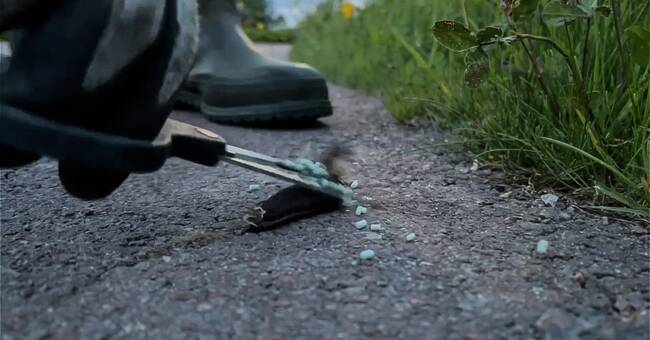The killer snail, or Spanish forest snail as the species is actually called, was first observed in Sweden in 1975. The species spreads with human help, as a free passenger among, for example, plants and soil.
- It has come further and further north.
The species is now found in the interior of Norrland, for example Vilhelmina, says Ted von Proschwitz, associate professor at the Gothenburg Museum of Natural History.
He has become known as a snail expert, and received an inquiry earlier this year.
Emelie Birgersson, a gardener in Varberg, asked for advice for her "project" with joint snail control.
- I have had a garden for about three years, and have waged a constant but uneven battle against snails since day one, says Emelie Birgersson.
Right in time
Last winter, she jokingly put forward the idea of organizing "the killer snail's bad luck day".
- People said "Yes but start it!".
Emelie Birgersson created a page on Facebook, and sent emails to, among others, professional growers.
She received encouraging comments, otherwise not much.
But in early June, interest exploded, not least from the media.
"The killer snail's bad luck day" has ended up right in time, thinks Ted von Proschwitz.
- There are still no sexually mature snails, only the overwintered young animals.
If we kill as many as possible now, we'll do it before they start laying eggs for the next generation.
Shovel and lamp
His advice is to go out in the evening with a flashlight and shovel.
- Light and look for where there are most snails!
Look especially in places where it can be damp, such as under plants with low leaves, or other shady places!
Ted von Proschwitz recommends killing with a bite about one or 1.5 centimeters into the snail.
- Only the head should be off.
They die immediately, and it is a biologically pure method, he says.
Then you can bury the dead snails - or leave them lying.
Then more snails come to cannibalize their fellow species, and you can kill them too.
Risk of snail thighs
He fears that there may be many snails this year, as May has been humid in many places.
It benefits the young snails that have wintered in the ground.
Next year, "killer snail day" may occur earlier.
That was the idea from the beginning.

